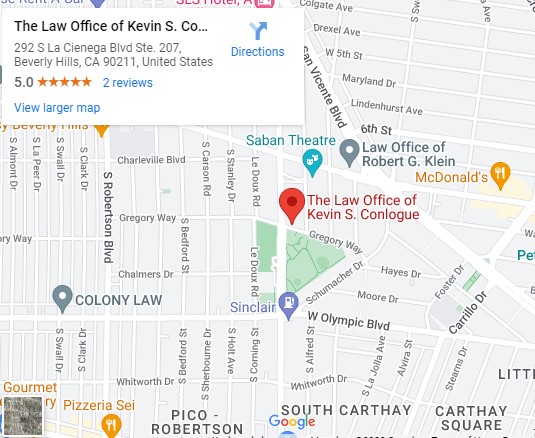Understanding the Delayed Discovery Rule
If you or someone you love was involved in a personal injury case in California where you only discovered you were hurt long after the accident concluded, you may be wondering if you still have a chance to receive justice. California’s Delayed Discovery Rule becomes a silver lining in such instances. It permits legal recourse that might otherwise be barred by rigid statutes of limitations.
The Discovery Rule is a legal principle applied to address situations where the statute of limitations clock for filing a lawsuit begins when the injured party discovers or reasonably should have discovered the injury or harm rather than when the injury initially occurred. This rule is particularly relevant in cases where the harm is not immediately apparent or where the injured party couldn’t have reasonably discovered the injury at the time it occurred.
Key Summary:
- California’s Delayed Discovery Rule is a crucial legal principle allowing legal recourse in personal injury cases where the discovery of harm occurs long after the incident due to hidden injuries or delayed symptoms.
- The statute of limitations for personal injury claims in California is two years from the date of injury.
- The Discovery Rule determines when the statute of limitations starts for filing a lawsuit, particularly in cases where harm is not immediately apparent.
- The Delayed Discovery Rule applies when the injured party discovers the injury after a certain period and can prove factors such as lack of knowledge, inability to discover, or insufficient investigation.
- Common scenarios for Delayed Discovery include medical malpractice, toxic exposure, product liability, hidden injuries, occupational diseases, and repressed memories.
- Applying the Discovery Rule extends the time to file a lawsuit, considers reasonable diligence, and is case-specific, involving a thorough analysis of the circumstances.
- Delayed Discovery vs. Tolling/Suspending: Delayed discovery refers to starting the clock upon discovery while tolling/suspending involves temporarily stopping the statute of limitations countdown in specific situations.
From medical malpractice to instances of accident negligence, explore how the delayed discovery rule becomes an avenue of fairness, ensuring that those affected by harm have a reasonable opportunity to seek recourse even when time has hidden the cause of their pain.
What is the Delayed Discovery Rule?
The statute of limitations sets a time limit within which a legal action must be initiated after a particular event or injury occurs. The statute of limitations for personal injury claims in California is two years from the date of injury.
The Discovery Rule refers to a legal principle that determines when the statute of limitations begins to run for filing a lawsuit. The Discovery Rule is often applied in cases where the harm or injury is not immediately apparent or where the injured party may not reasonably have known about the injury.
The statute of limitations typically starts running under the Discovery Rule. It starts from the time when the injured party discovers, or should have discovered, the facts that give rise to the cause of action. This rule is especially important in cases involving medical malpractice, toxic exposure, fraud, or other situations. In these cases, the injury or harm may not be immediately evident.
The Discovery Rule aims to ensure individuals have a fair chance to pursue legal action when they become aware of harm they’ve suffered. This rule prevents unfair barriers from rigid time limits that start running from the moment the injury occurred.
When Does the Delayed Discovery Rule Apply?
The Delayed Discovery Rule typically applies in situations where the injured party only discovers the injury after a certain period has passed. You can invoke this rule only if you can prove the following:
- You didn’t find or know the facts about your case that would make a reasonable individual think that someone else’s wrongdoing hurt you.
- No one could have found or known about the elements of your case that would make a sensible person think they were hurt by someone else’s wrongdoing.
- There wasn’t sufficient investigation or consideration taken to find out that a product or event caused your harm or loss.
Here are some common scenarios where the Delayed Discovery Rule may apply:
- Medical Malpractice: In medical malpractice cases, symptoms of a negligent act may not manifest immediately. The statute of limitations may begin when the patient discovers or reasonably should have discovered the malpractice and resulting harm.
- Toxic Exposure: Exposure to harmful substances may not cause noticeable harm until years later. The statute of limitations in toxic tort cases may be delayed until the injured party becomes aware of the exposure and resulting injury.
- Product Liability: In cases where a defective product causes harm, the Delayed Discovery Rule may apply if the defect is not immediately evident, and the injured party discovers it later.
- Hidden Injuries: Some injuries may not be immediately apparent or may have delayed symptoms. For example, in a car accident, internal injuries or soft tissue damage may not be immediately noticeable, and symptoms may manifest over time.
- Occupational Diseases: In cases of occupational exposure to harmful substances (such as asbestos), diseases may develop gradually, and symptoms may not become evident until years after exposure.
- Repressed Memories: In accident cases where a person has repressed memories of a traumatic accident that caused injury, the statute of limitations may be tolled until the memories are recovered.
The application of the Delayed Discovery Rule can vary depending on the specific circumstances of the case and the surrounding factors.
What Happens When the Discovery Rule is Applied?
When the Discovery Rule is applied, it generally has several implications for how the statute of limitations is calculated and when a lawsuit can be filed. Here are some key outcomes:
- Statute of Limitations Clock Starts Later: The main impact of the Discovery Rule is that the clock for the statute of limitations does not start running immediately after the event that caused the injury. Instead, it starts when the injured party discovers or reasonably should have discovered, the facts giving rise to the cause of action.
- Extended Time to File Lawsuit: The Discovery Rule effectively extends the time within which the injured party can file a lawsuit. The injured party has a certain period from the date of discovery to initiate legal action, as opposed to a fixed period from the date of the harmful event.
- Reasonable Diligence Consideration: Courts will often consider whether the injured party exercised reasonable diligence in discovering the injury. If a court determines that the injured party could have, through reasonable diligence, discovered the injury earlier, it may affect the application of the Discovery Rule.
- Application to Specific Types of Claims: The Discovery Rule is commonly applied in cases where the harm is not immediately apparent, such as in medical malpractice, toxic exposure, fraud, or certain personal injury cases. It may not apply uniformly to all types of legal claims, and its application can depend on the jurisdiction and the nature of the claim.
- Case-by-Case Analysis: The application of the Discovery Rule is often a matter of case-by-case analysis. Courts will consider the specific facts and circumstances surrounding the discovery of the injury to determine when the statute of limitations clock started running.
- Equitable Considerations: The Discovery Rule is often considered an equitable doctrine, aiming to provide fairness to injured parties who may not have been immediately aware of the harm they suffered. It balances the need for injured parties to pursue legal remedies with the interests of defendants in having claims asserted within a reasonable time.
Delayed Discovery vs Tolling/Suspending
Delayed discovery and tolling/suspending are related concepts in the context of statutes of limitations, but they refer to different legal principles.
Delayed Discovery
Delayed discovery refers to a situation where the statute of limitations is not triggered until the injured party discovers, or through reasonable diligence should have discovered, the facts giving rise to the cause of action. The clock for the statute of limitations starts running from the date of discovery, potentially providing the injured party with additional time to file a lawsuit.
Tolling/Suspending
Tolling or suspending refers to the temporary stopping or pausing of the statute of limitations clock. Tolling may occur in specific situations defined by law. During tolling, the normal countdown of the statute of limitations is paused. Common events leading to tolling may include the minority of the injured party (e.g., the injured party is a minor) or the defendant’s absence from the state.
Learn More About California’s Delayed Discovery Rule With Our Personal Injury Lawyer
The Delayed Discovery Rule is an essential safeguard for those whose injuries may not immediately reveal themselves. It provides a crucial extension to the statute of limitations. This recognizes that justice should not be confined by rigid timelines. This is especially true when the injured party is unaware of the harm or its origins.
Navigating the complexities of personal injury law requires the support and guidance of legal professionals. Timing of discovery is a pivotal factor. Our team at Conlogue Law LLP is dedicated to empowering individuals to assert their rights, even when the full extent of their injuries becomes known over time.
Whether faced with hidden medical malpractice, toxic exposure, or the consequences of premises liability, product liability, or some catastrophic injuries, Conlogue Law LLP is here to navigate the legal landscape on your behalf. We believe in a client-centric approach. We ensure that every individual receives personalized attention and a strategic legal plan tailored to their unique circumstances.
Protect your legal rights and receive the justice you deserve with the help of our Beverly Hills personal injury attorney. Contact us today for a free initial consultation!








